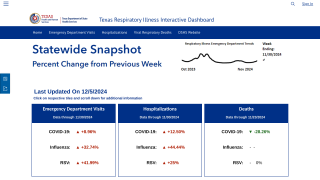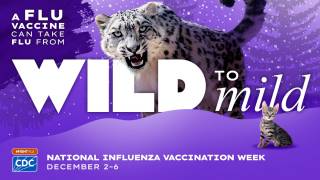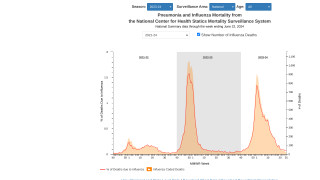48% Of Americans Intend To Avoid Flu Shots

New information released by the National Foundation for Infectious Diseases (NFID) revealed that only 52 percent of US adults plan to get vaccinated against the influenza virus this season.
Overall, these estimates published on September 26, 2019, show that flu vaccination coverage has increased over the past decade.
Flu vaccination coverage among children age 6 months to 17 years was 63 percent for the 2018-2019 flu season, which is an increase from 51 percent in 2010-2011.
In this press release, representatives from NFID and other leading public health and medical organizations urged the public and healthcare professionals to follow the Centers for Disease Control and Prevention (CDC) recommendation for everyone age 6 months and older to get vaccinated against flu annually.
“Many people underestimate the severity of flu, yet we know flu causes hundreds of thousands of hospitalizations and tens of thousands of deaths each year in the United States,” said Secretary of Health and Human Services Alex M. Azar.
“When it comes to protecting people from flu, our best preventive tool is an annual flu vaccine. It can safely prevent flu illnesses, hospitalizations, and deaths,” added Secretary Azar.
In reviewing vaccine coverage estimates from the CDC for the 2018-2019 flu season, Secretary Azar noted, “we are making important gains in flu vaccination coverage in some groups of people, especially children, but in adults, we see a disappointing plateau.”
“We are under-utilizing this potentially life-saving resource.”
Furthermore, influenza vaccination coverage varied significantly by state.
During the 2018-2019 flu season, vaccination coverage in adults ranged from 34 percent in Nevada to 56 percent in Rhode Island.
Moreover, flu vaccination coverage in children ranged from 46 percent in Wyoming to 81 percent in Massachusetts.
Non-Hispanic white adults had higher coverage rates than non-Hispanic black, Hispanic, Asian, and American Indian/Alaska Native adults and adults of other or multiple races.
Among children, Asian children had higher coverage rates than children in all other racial/ethnic groups.
“Our survey revealed that nearly a quarter of US adults at highest risk of flu-related complications—those who are 65 and older or who have an underlying condition like asthma, diabetes, and heart disease—do not plan to get vaccinated against flu this season,” said William Schaffner, M.D., medical director of NFID.
“We must continue to educate everyone, especially older adults (age 65 years and older) and those with chronic health conditions, about their risk for flu and pneumococcal disease.”
“Pneumococcal vaccines can be given at the same time as a flu vaccine, so it’s a great time to speak with a healthcare professional about which vaccines are best for you.”
For the 2019-2020 flu season, vaccine manufacturers have estimated that up to 169 million doses of influenza vaccine will be available in the US. The composition of the vaccines available this season has been updated to protect against the influenza viruses that research suggests will be most common during the 2019-2020 season.
For the 2019-2020 season, CDC recommends the use of any licensed, age-appropriate flu vaccine as soon as it is available in your community.
Flu shot options include the following:
- Standard influenza vaccine, which includes four influenza viruses (quadrivalent—two influenza A and two influenza B), for children and adults age 6 months or older;
- Adjuvanted vaccine and high dose vaccine for adults age 65 years and older, both of which are designed to help initiate a more robust immune response;
- Flu vaccine grown in cell-culture (not eggs) for children age 4 years and older;
- Flu vaccine made using recombinant technology (another alternative to egg-based vaccine production) for adults age 18 years or older; and
- Live-attenuated influenza vaccine (LAIV) that is given via nasal spray for children and adults (who are not pregnant) age 2-49 years.
Although not a substitute for getting an annual flu vaccine, health officials also stressed the importance of everyday preventive actions to decrease the spread of flu and the appropriate use of influenza antiviral drugs to treat influenza.
Four licensed influenza antiviral drugs are recommended for use in the US this flu season: oseltamivir, zanamivir, peramivir, and baloxavir marboxil.
Most pharmacies in the USA offer flu shot services and antiviral medications.
Flu shot discounts can be found here.
This NFID-sponsored survey was conducted by NORC at the University of Chicago.
Founded in 1973, the National Foundation for Infectious Diseases (NFID) is a non-profit 501(c)(3) organization dedicated to educating the public and healthcare professionals about the burden, causes, prevention, diagnosis, and treatment of infectious diseases across the lifespan. For additional information, visit NFID.
Influenza news published by Precision Vaccinations
Our Trust Standards: Medical Advisory Committee

























